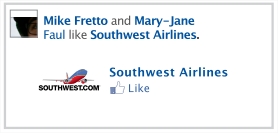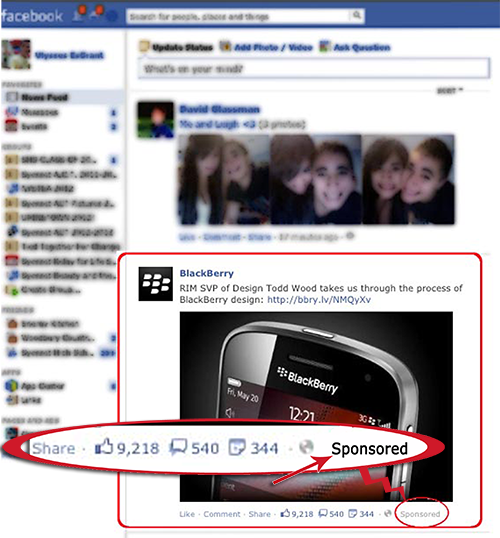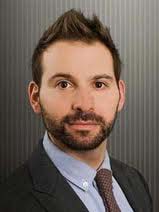Best Practices: Facebook Marketing for Arts Organizations
By Erik Gensler
August 30, 2012

While there are many social marketing options for performing arts organizations, Facebook remains at the center of social media activities for building and maintaining an audience—and driving ticket sales and other business goals. In developing a strategy to most effectively use Facebook, it is useful to think of the social platform
and its tools as a metaphorical megaphone.
The Facebook “megaphone” is primarily used in three ways:
- Broadcasting your message and content to your Facebook audience
- Passing others the megaphone to use
- Turning up the “volume” of the content you’re delivering through the megaphone
Using the megaphone to broadcast
Facebook provides the platform and tools to create and distribute your wn content. Your organization uses the megaphone to distribute your content (images, videos, reviews, etc.) and users are responding to the content with Likes and comments and shares.
This is what many arts organizations think of as their Facebook strategy: building a community of people who “like” the organization and serving content users react to and (hopefully) share.
In this scenario, success is getting the largest possible group of interested people to see and interact with your content. So you must first build a large community of users who Like you and, secondly, serve them engaging content.
To build engagement, it’s important to understand Facebook’s EdgeRank.
EdgeRank is the algorithm—the formula—Facebook uses to determine what appears in users’ news feeds. There is enormous information from a variety of sources available to Facebook users and the news feed is the order in which that information appears. It determines not only how important you are to your connections, meaning how frequently your content appears, but also what kinds of content appear higher than others.
A good EdgeRank can increase the number of people who see your post by five times. Take two hypothetical organizations, both with 1,000 fans. Organization A gets frequent Likes, comments, and shares on its posts. Organization B does not. Because of this, a typical post by Organization A will be shown to 500 people while a typical post by Organization B will be shown to 100 people. Big difference.
EdgeRank is based on three factors:
- Individual user interest: A user is more likely to be shown your post if he has interacted with your content in the past.
- Post interest: If Facebook sees the posted content is getting Likes and comments, the post will be shown to more people.
- Time decay: Newer posts show up more and lose value over time.
There’s not much you can do about #3, but to help with #1 and #2 you need each post to garner Likes, comments, clicks, and shares to boost your EdgeRank.
It’s important not to only use to broadcast content, since this treats the platform as a one-way communication, like email or even direct mail, and truly doesn’t leverage the power of the “social” part of the social network. The real power of Facebook comes when you can get people who care about you to post on your behalf. Which takes us to…
Passing the megaphone
To really increase your impressions, engagements and, ultimately, sales, users need to post about your organization on Facebook. What is better than an endorsement post such as: “Just saw Show XYZ at Theater ABC. It was amazing. [link to your website]”
Most organizations are not measuring these interactions. A look at the analytics usually reveals that each time a user posts a link to a site, it gets anywhere from 500 to 2,000 endorsed impressions on Facebook and anywhere from 2 to 20 clicks back to the site. This is Facebook gold.
Smart marketers should measure these share interactions and build tools to encourage shares.
Encouraging shares
Add Facebook Domain Insights code to your site. It’s very simple; have a look: http://developers.facebook.com/docs/insights/
Once installed, you can get these stats at: Facebook.com/Insights. Here, you can see Actions (number of links posted by users on Facebook to your site), Distribution on Facebook (endorsed impressions), and the Referral Traffic to Back to your Site (how many users clicked the link).
Turning up the volume
Facebook advertising works great for arts organizations because it can massively increase your reach versus just relying on creating your own content. This is called “turning up your megaphone.” Plus, advertising allows you to target by interest and demographics. You want to reach female, college educated dance lovers over age 35 within 25 miles of Chicago? No problem.
There are two ad types that can help arts organizations increase the number of fans and amplify reach:

1. Page Like Stories: These ads show the name of your organization and the name of any users’ friend who Likes it. The only call to action is to Like your page. These work great and are an inexpensive way to acquire new fans. Social ads—ones with the names of friends attached—get far more clicks than non-social ads. Make sure to add the demographic targeting on top of these ads to target the type of audience you want to reach.
2. Page Post Sponsored Story Ads. Say you create a short promotional video of an upcoming performance. If you show this to your universe of, say, 10,000 fans, perhaps 2,000 people will see it. If you turn the video into a Page Post Sponsored Story, it can be seen by hundreds of thousands of people, fans and non-fans alike.

Facebook offers an option to add sponsored content to its News Feed.
Focus on these areas and you will be on your way to building a large and engaged community on Facebook—a community that is responsive and receptive to your organization’s offerings, which will ultimately lead to more ticket sales and donations.

Erik Gensler is the president of digital marketing consulting firm Capacity Interactive, whose clients include leading arts organizations; founder of Digital Marketing Boot Camp for Arts Marketers, an annual conference for arts marketers in NYC each October; has presented conference sessions on digital marketing; and has guest lectured at Columbia, NYU, and Baruch College.
Copyright © 2025, Musical America